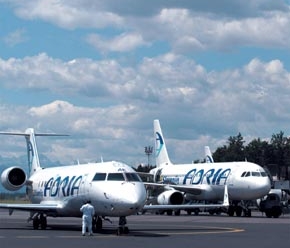

After the lifting of checks at internal land and sea borders with the Schengen area Member States on 21 December 2007, when Slovenia and eight other EU Member States[1] entered the common area of free movement without internal border controls based on a decision by the EU interior ministers, border checks will also be lifted at air borders on 30 March 2008. This will represent the final step in the abolition of controls at internal borders.
Based on its assessment that all nine candidates for enlargement of the Schengen area, including Slovenia, were ready for full application of the provisions of the Schengen acquis, the JHA Council on 6 December 2007 adopted the Council Decision on the full application of the Schengen acquis in the Czech Republic, Republic of Estonia, Republic of Latvia, Republic of Lithuania, Republic of Hungary, Republic of Malta, Republic of Poland, Republic of Slovenia and Slovak Republic  . With Slovenia's entry into Schengen, border controls at the borders with Austria, Italy and Hungary were abolished, while at the same time border controls at the border with Croatia were reinforced, since this is now an EU external border. The entry into force of the Council Decision allowed for the lifting of checks at internal land and sea borders on 21 December 2007 and at air borders on 30 March 2008.
. With Slovenia's entry into Schengen, border controls at the borders with Austria, Italy and Hungary were abolished, while at the same time border controls at the border with Croatia were reinforced, since this is now an EU external border. The entry into force of the Council Decision allowed for the lifting of checks at internal land and sea borders on 21 December 2007 and at air borders on 30 March 2008.
The decision to abolish controls at airports at a later time has to do with changes in flight schedules, which are made twice a year in spring and in autumn. Apart from that, the reasons are also technical, as the implementation of the Schengen regime at airports imposes a strict separation between passengers on internal Schengen flights and other passengers in international traffic. In addition to high standards of physical border surveillance at land border crossing points and the use of the Schengen information system, the rules of Schengen external border control also require state-of-the-art technology for border checks at airports, which are simultaneously border crossing points at the external Schengen border (for extra-Schengen flights)and crossing points of internal borders without border checks (for intra-Schengen flights).
To be able to meet the Schengen standards in air border control, Slovenia had to upgrade its airport infrastructure to allow for separation of passengers on Schengen and non-Schengen flights. Last year certain construction works and other measures were carried out at Ljubljana Jo~e Pu nik Airport to ensure the separation of internal and external flight passengers (a new passenger terminal at Jo~e Pu nik Airport was officially opened on 9 July 2007).
For air passenger this means in practice that from 30 March onwards border checks will only be carried out on non-Schengen flights, i.e. flights involving the crossing of the external border. On these flights, border checks will be carried out for all passengers entering or exiting the Schengen area (including transit passengers catching a connecting intra-Schengen flight). There will be no border checks for internal flights from one Schengen country to another. The only remaining checks will be security checks, which will be performed by a security company and not by the police.
[1]The Czech Republic, Estonia, Latvia, Lithuania, Hungary, Malta, Poland, Slovakia and Slovenia entered the Schengen area on 21 December 2007.